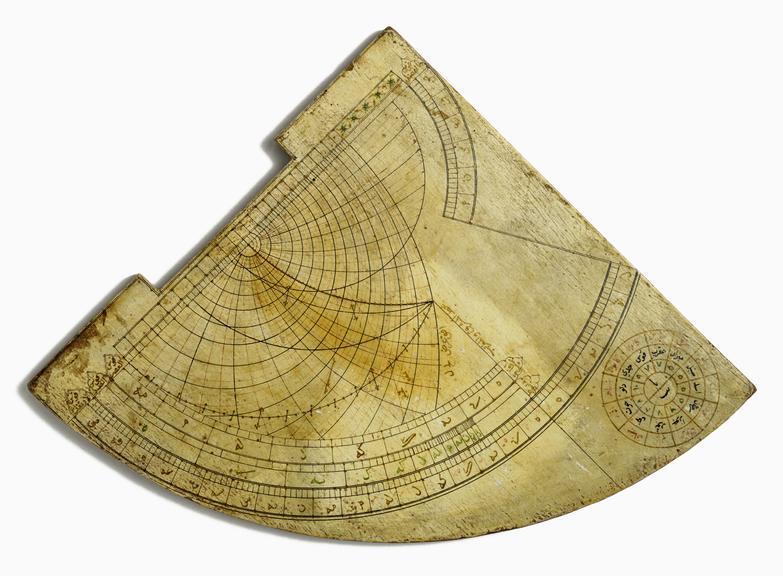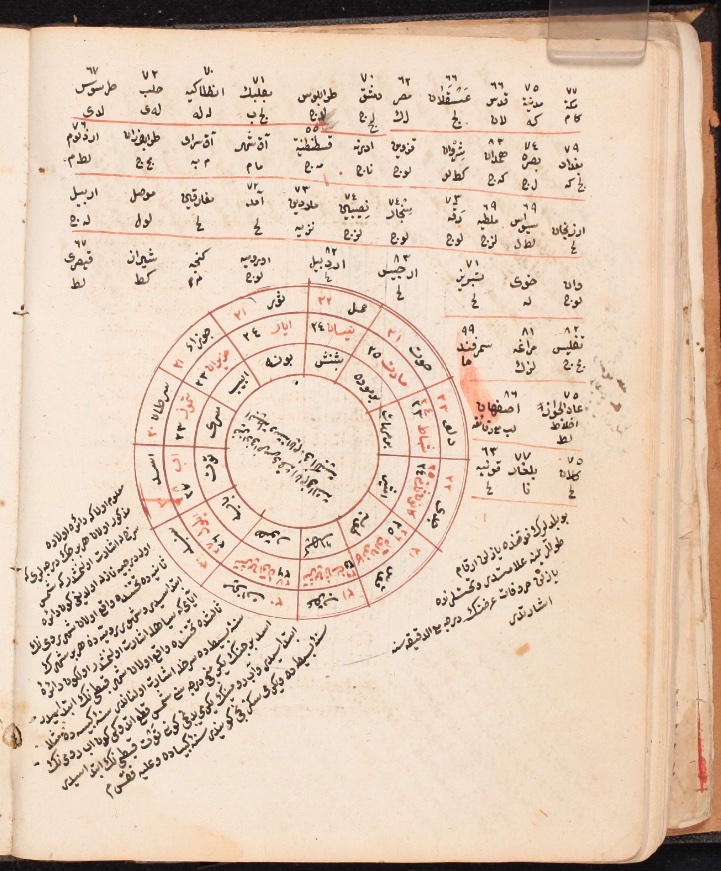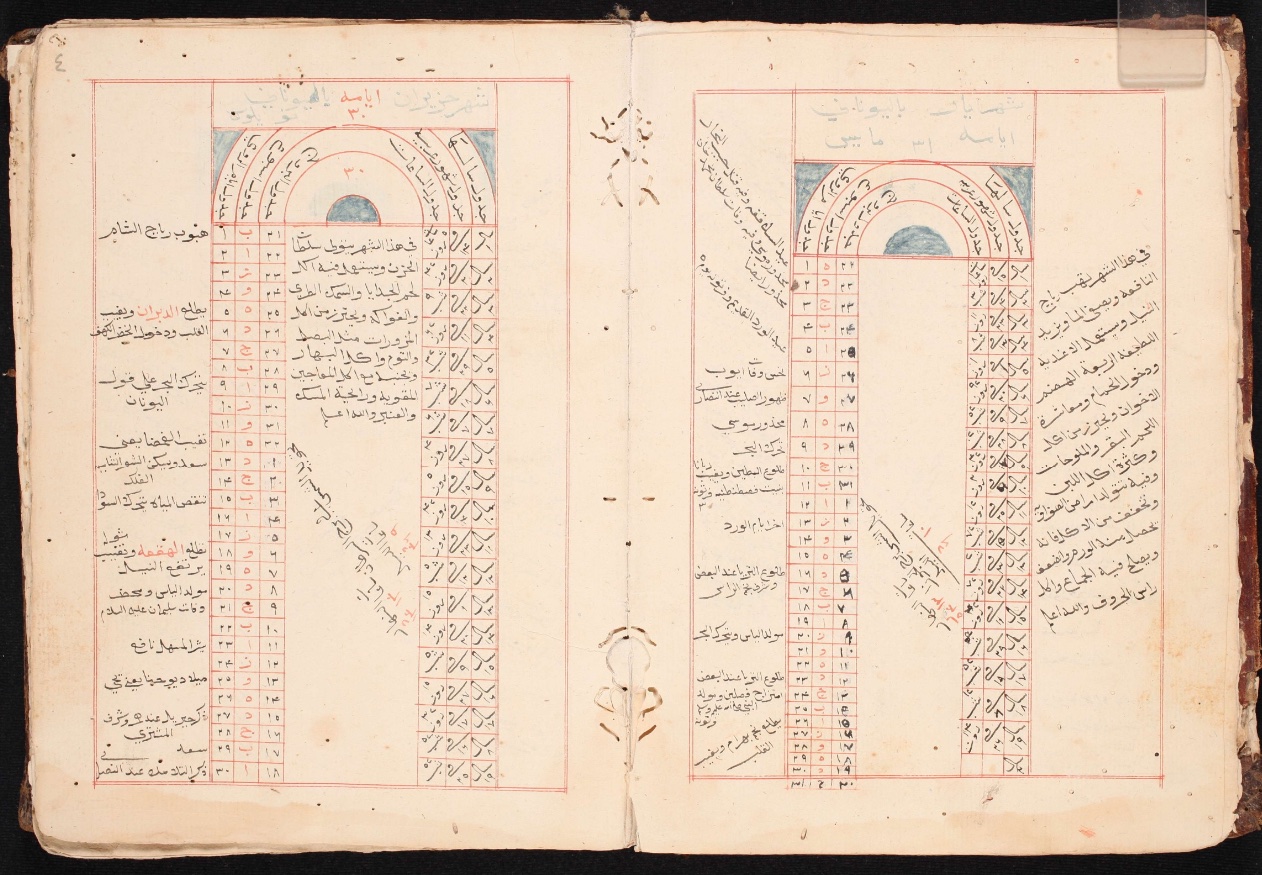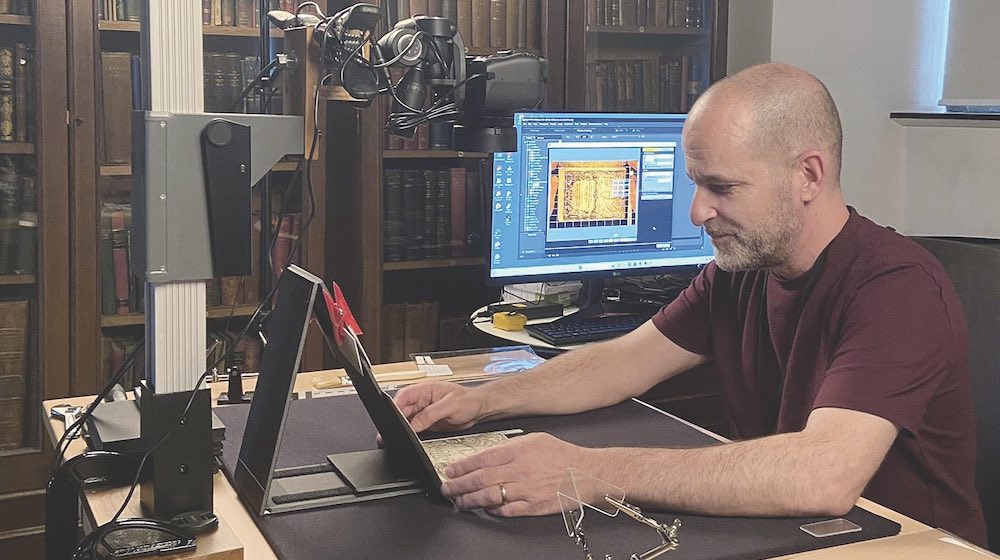Astronomical Technology And Religious Practice In Islam
Astronomical Technology and Religious Practice in Islam
May 26, 2022This story is part of an ongoing series of editorials in which HMML curators and catalogers examine how specific themes appear across HMML’s digital collections. Dr. Josh Mugler looks at The Celestial in this story from the Islamic collection.
Astronomical observation is built into the most basic religious practices of the Islamic tradition. The five daily prayers that are expected of Muslims take place at specific times determined by the position of the sun: one at dawn, one at solar noon, and so on. During these prayers, practitioners face in the direction of the Kaʻbah, the central sanctuary in Mecca—this requires some study of one’s geographical position in order to determine the correct qiblah (direction of prayer). Furthermore, the rhythms of the lunar religious calendar, most notably the fasting month of Ramaḍān and the two great holidays of ʻĪd al-Fiṭr and ʻĪd al-Aḍḥá, are built around observations of the moon, with each month beginning on the night that the new crescent moon is sighted.
Not everyone has access to the instruments and expertise that are necessary for a precise assessment of latitude and longitude or the position of the sun or moon, especially during the centuries before the relevant information could be quickly accessed through a smartphone app. There are accommodations in the Islamic tradition for this reality. For those with access to more advanced scientific education and research, it was natural that astronomical advances would be utilized to facilitate religious practice, as well as other purposes like navigation.
From at least the 13th century CE, many prominent mosques in urban centers employed a muwaqqit, or timekeeper, a scholar of astronomy whose work was focused on fixing the prayer times and the religious calendar. Several different astronomical instruments became key tools for muwaqqits and other Muslim astronomers. The most important of these were the various types of quadrants (rubʻ) and astrolabes (asṭurlāb), but celestial globes (kurrah or dhāt al-kursī) and other tools were also employed.

Many of these devices already existed in the ancient world, but they were improved and further developed by Muslim astronomers and the non-Muslims working alongside them. These tools continued to contribute to scientific knowledge and innovation throughout the modern world.
HMML’s microfilm and digital collections include dozens of copies of Islamic texts on the proper construction and use of astronomical tools. Sometimes these treatises include drawings of the devices themselves or diagrams showing their various parts, while other treatises carefully explain the different parts of the tool without visual aids.

These texts in HMML’s collections are generally written in Arabic or Ottoman Turkish, by authors from the 9th century to the 19th. They include treatises by prominent and prolific astronomers like ʻAlī ibn al-Shāṭir (1304–1375), who worked as muwaqqit at the Umayyad Mosque in Damascus, as well as texts by otherwise obscure timekeepers recording the techniques they learned through their years of experience in the field. There are also several copies of an Arabic text by Aḥmad al-Qalyūbī (d. 1659) about timekeeping without an instrument, for those who do not have access to the more advanced tools.
In addition, these manuscripts include many collections of calendrical and astronomical tables, the fruit of centuries of detailed celestial observations, often undertaken at major observatories in Islamic cities. These tables help the reader understand the relationship between the lunar calendar that structures Muslim religious life and a variety of solar calendars—especially those used by Syrian, Coptic, and Byzantine Christians—which are useful in tracking the rhythms of the seasons for agriculture and similar purposes.

These treatises and tables are not abstract theoretical accounts of celestial phenomena to be read by advanced students of astronomy; instead, they are practical guides to the use of astronomical tools and observations that could make daily religious practice easier for the entire community.
Like the qiblah and prayer-time apps that can be found on the smartphones of millions of Muslims today, high technology like the quadrant and the astrolabe shaped the religious life of Muslims around the world for many centuries in the past—and books helped those without access to the tools to benefit from the knowledge.




